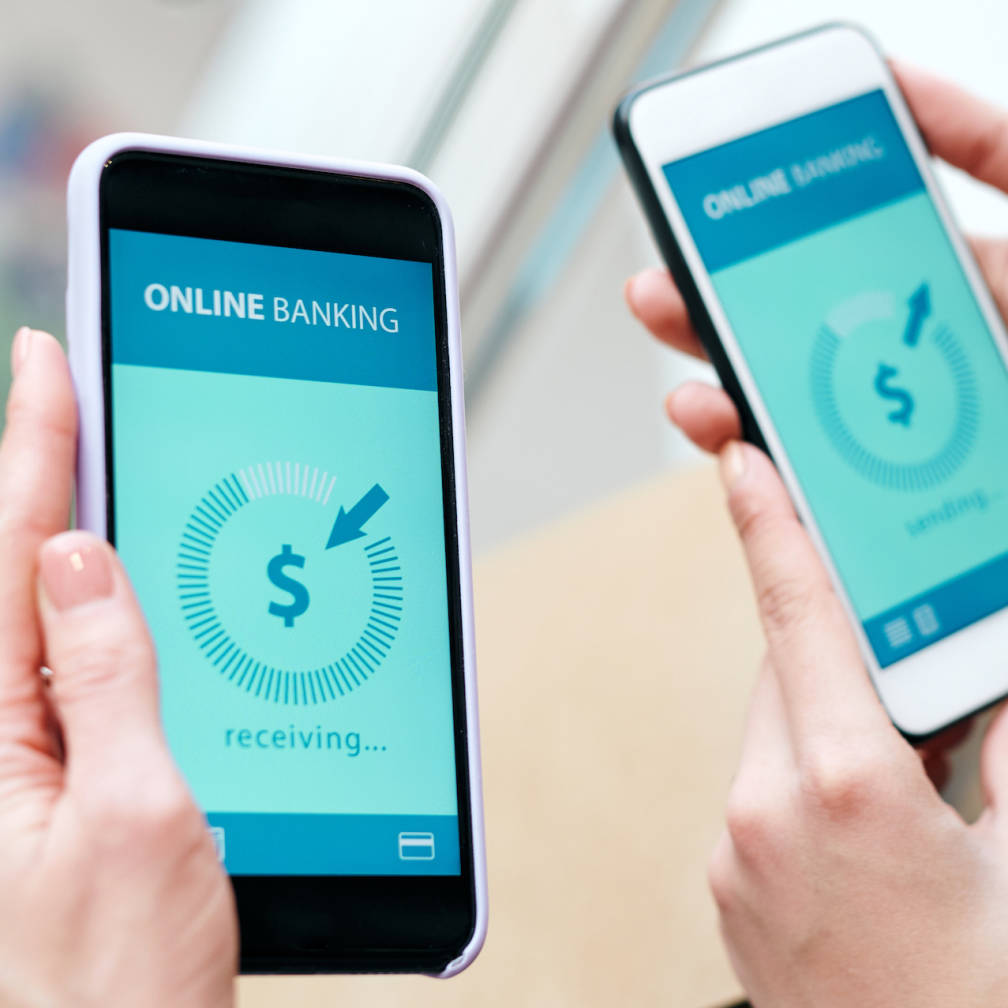What is the SWIFT banking and payment system? How it works in 3 steps

Key takeaways:
SWIFT is a telecommunication platform that facilitates international transfers between banks. They don’t actually handle any funds themselves.
This 50-year-old messaging service revolutionised traditional wire transfers for efficient currency exchange and transfers.
SWIFT is a trusted system for multinational enterprises, but its typical turnaround time of one to five business days and costly fees have made modern solutions more attractive.
Multinational enterprises (MNEs) in the U.S. alone employ more than 44.3 million workers1 operating across countries, continents, and currencies. Covering payroll, office expenses, and partnerships globally requires quick, efficient currency exchanges to settle invoices and receive payments.
Crystal-clear communication is essential at this scale, which is how the standardised SWIFT banking system became so popular.
The Society for Worldwide Interbank Financial Telecommunications (SWIFT) is a financial messaging system that facilitates the movement of money globally. If you’ve ever received or sent money overseas, chances are you’ve used SWIFT.
SWIFT doesn't actually transfer or hold money. It's a messaging network used by financial institutions when processing international money transfers for the last 50 years.
It’s a tried and trusted system, but businesses and individuals have been looking to new technology to enable faster and more cost-efficient global payments in recent years. In this article, we’ll delve into what SWIFT is, how SWIFT transfers work, and explore new SWIFT alternatives for businesses.
What are SWIFT Payments and how do they work?
The SWIFT payment network acts as an information transport network, connecting your money’s original location to its final destination. So, you’ll need an account with a bank that operates internationally and has a SWIFT code to make a payment, as well as a few additional details.
SWIFT is an acronym for the Society for Worldwide Interbank Financial Telecommunications and that last part is a clue to its function; SWIFT doesn’t actually transfer money — it transfers information. So, while we call them SWIFT transfers, that’s not entirely accurate. When you make a SWIFT payment, your bank is still the one transferring money to the recipient’s bank.
When you “send” money using SWIFT, the network creates a payment order that gets passed between different financial institutions involved. Each financial system has a SWIFT code, and this code system allows SWIFT to identify the financial institutions involved in the transfer.
1. Gather the needed banking information
As with any transfer, you need some key financial information for all of the parties involved. This is the information SWIFT uses to facilitate the money transfer between international banks.
To complete a SWIFT payment, you’ll need:
All of your personal information, including name, address, and bank identification.
The recipient’s full name; either the business’ name or an individual legal name.
The recipient’s address (use a business address if the recipient is a business).
The recipient bank’s name and address.
The recipient bank’s SWIFT code.
A SWIFT code consists of eight to 11 characters. These characters are used to identify the bank that is sending the message and the bank that is receiving it. SWIFT codes are also known as Bank Identifier Codes (BIC).
Each element of a SWIFT code represents a piece of information:
A 4-letter bank code
A 2-letter country code
A 2-digit location code
A 3-digit branch code (SWIFT codes don’t always include this)
Note: SWIFT codes aren’t the same as International Bank Account Numbers (IBAN). IBANs and SWIFT codes are often confused because both are needed to send an international payment. The difference between an IBAN and a SWIFT code is that unique IBANs identify an individual bank account, whilst SWIFT codes identify a bank.
2. Request a transfer and consider fees
After you’ve gathered the recipient bank’s SWIFT number and other identification details, the process is similar to any other bank transfer. You can contact your bank in person or online to initiate the transfer.
But make sure you understand how SWIFT payment fees work before you submit the payment. Given the international nature of the SWIFT payment network, there is no set table of fees, so it pays to check first.
There are two sets of fees you can expect to pay when making a SWIFT payment.
Transaction fees: SWIFT communications don’t always travel directly between banks. Sometimes, they go between intermediary banks before reaching their final destination, and each bank charges a handling fee for their service. Your bank may charge a flat-rate or variable fee.
Foreign exchange fees: Transfers involving currency exchanges charge a foreign exchange (FX) fee. The FX rate offered depends on the interbank rate (the rate that banks pay when exchanging currencies with other banks), and the FX fees that the bank charges its customers. Banks can charge up to 3.5% in FX fees on top of the interbank FX rate, so there may be a cheaper way to send your money.
It’s important to check how fees are charged to ensure your recipient gets the correct amount of money. Banks allow you to choose whether fees are paid by you, your recipient, or split between the two of you. You should agree which option is best for you and your recipient before making the payment.
Airwallex offers businesses a more cost-efficient way to make international money transfers and handle global finances. We don’t charge transaction fees on international payments, and our FX rates are significantly lower than those of high street banks.
3. Confirm the recipient country and currency
Once you’ve arranged the transfer with your bank, they’ll ask you to confirm the recipient country and desired currency. Remember that you’ll have to pay FX rates if the recipient's currency is different from yours.
At this point, your bank and the recipient bank will arrange the transfer via SWIFT messages. The transfer may clear between one to five business days.
History of SWIFT and why it’s important
Founded in Brussels in the 1970s, SWIFT established a series of standardised international payment processes. Prior to SWIFT, banks relied on the TELEX system to process global transfers via wire systems2, which evolved into the phrase “wire transfer.”
SWIFT provided financial institutions with a private network to transmit financial data worldwide. They also introduced a standardised system of codes to identify financial institutions. This meant they could offer their members complete security and accuracy when processing global transfers. Since its inception, SWIFT has grown to include over 11,000 financial institutions spanning 212 countries across the world, providing a secure method for banks to transfer currency between countries and a host of other services.
SWIFT services
SWIFT supports businesses with a range of services well beyond its financial messaging banks. Businesses can also use SWIFT for:
Market infrastructure services to help businesses adapt to evolving community needs and financial regulations.
Financial crime compliance and cybersecurity support to maintain effective compliance with international sanctions, anti-money laundering (AML), and know-your-customer (KYC) requirements.
Corporate treasury, including cash management and financial risk management, to navigate the modern, global economy.
Ultimately, this is just a preview of the full list of SWIFT products and services3.
The geopolitical relevance of SWIFT
Because the SWIFT network is the most common way for banks around the world to transfer money globally, it also plays a significant role on the geopolitical stage. Although SWIFT itself is neutral, cutting financial institutions off from the SWIFT network has become a key way for the European Union (EU) to sanction countries that have broken international law.
In 2012, EU sanctions against Iran meant that SWIFT disconnected from sanctioned Iranian banks. And in February 2022, SWIFT severed ten Russian and Belarusian banks from their systems on instruction from the EU after Russia’s invasion of Ukraine. Alternative payment systems, including Airwallex, were also required to block payments to and from Russian banks in accordance with EU sanctions.
Sanctions are designed to put economic pressure on countries that have broken international law, as they prevent those countries from receiving payments from other countries.
SWIFT’s lead regulator is the Bank of Belgium and it operates under Belgian law. However, SWIFT is also overseen by the G-10 central banks, and other banks from major economies, including the People’s Bank of China, the Monetary Authority of Singapore, and the South African Reserve Bank.
Who uses SWIFT
SWIFT is used by a range of businesses and individuals who wish to transfer money overseas. This includes:
Banks
Cross border businesses
International employers
Global franchises
Securities dealers
Asset management companies
Clearing houses
Depositories
Foreign exchange brokers
There are other messaging networks that can be used for transferring money globally, such as Fedwire, Ripple, and Clearing House Interbank Payments System (CHIPS). But SWIFT remains the most widely used network for transferring money globally.
However, many businesses now look to faster and more cost-efficient ways to send and receive money overseas in an increasingly global world.
An Airwallex multi-currency business account is one such solution, offering businesses same-day transfers, market-leading rates and world-class security, as well as the ability to trade in multiple currencies from a single platform.
SWIFT network considerations
The SWIFT payment network has a lot of advantages. It’s secure, transparent and reliable. However, it also has a couple of disadvantages to consider.
Delayed payments: SWIFT transfers can take up to five days or more to process because they may rely on the cooperation of multiple financial institutions. If you’re a business that needs to pay staff and suppliers on time, business transfer delays can cause a lot of problems. No one wants to receive their paycheck five days late!
Hidden fees: Different financial providers charge different fees when processing SWIFT transfers, which means it can be difficult to determine the final cost of a SWIFT transaction. So, you and your recipient may be subject to hidden payment fees. In the worst case, this might mean your recipient receives less money than they’re expecting, which can cause friction between businesses and the people they need to pay.
If these are concerns for you, there are several modern day solutions to help you complete international transactions quickly and with less fees.
SWIFT frequently asked questions
Who owns the SWIFT banking system?
SWIFT is also owned and controlled by its 2,400 global shareholders, who elect its Board of Directors. The SWIFT Board of Directors includes 25 representatives from banks around the world. SWIFT also employs an internal Executive Committee.
Do all banks use SWIFT?
Most banks have a SWIFT code, but it’s not a guarantee. Smaller banks and credit unions might not connect to the SWIFT network or use international routing codes. It’s a good idea to double-check that your bank and the recipient’s bank supports SWIFT transfers.
How many banks are connected to the SWIFT network?
Over 11,000 financial institutions across 212 countries are connected to the SWIFT network to support international money transfers.
Discover modern alternatives to SWIFT transfers
The SWIFT payments network was revolutionary for its time, but it’s now over 50 years old. Businesses that want an end-to-end financial solution that can help process international payments quickly and cost-efficiently are increasingly choosing alternative payment methods, such as Airwallex.
By making transfers with Airwallex, you can payout to over 150 countries, with 120+ countries leveraging local rails.
Using our payment rails, businesses can securely transfer money to over 150 countries in 60 currencies. Over 90% of our transactions go through local rails (instead of SWIFT) with approximately 90% of funds arriving within the same day.
Learn more about our fast, cost-effective FX and transfers here.
Sources:
https://www.bea.gov/news/2024/activities-us-multinational-enterprises-2022
https://www.elon.edu/u/imagining/time-capsule/150-years/back-1830-1860/
https://www.swift.com/our-solutions/a-to-z
Share

David manages the content for Airwallex. He specialises in content that helps EMEA businesses navigate global and local payments and banking.
View this article in another region:AustraliaCanadaEuropeNew ZealandSingaporeUnited StatesGlobal
Related Posts

What is a telegraphic transfer?
•4 minutes
